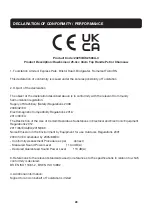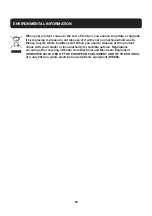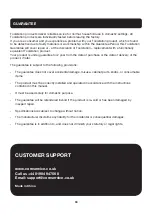
18
4. Work with wire and harness
NOTE: It is necessary to have a complete
training before working at high. It is strongly
recommended that only experienced and
trained persons carry out work at high. Know all
emergency procedures to be carried out.
These instructions are examples of good practice. Follow and
abide by local laws and regulations as well.
It is also recommended that the operator who is going to
work at height be assisted by another person.
It is compulsory with techniques of climbing and working
position. Be equipped with complete equipment including
harnesses, ropes, strops, snap hooks and other equipment
that allows them to maintain and maintain the saw by
adopting secure positions.
a. Using the Chainsaw in the Tree
An analysis of accidents with chainsaws during tree pruning
shows that the main cause is an inadequate use of the one-
hand chainsaw. In a large majority of accidents, operators do
not seek to adopt a safe working position that allows them
to hold with both hands. This results in an increased risk of
injury due to:
- The absence of a firm grasp of the chainsaw in case of
rebound
- A lack of control of the chainsaw, which is more likely to
come into contact with the climbing ropes and with the
operator's body (especially the hand and the left arm) and
- Loss of control due to unsafe working position, resulting in
contact with the chain saw (unexpected movement during
operation of the chain saw).
b. Safe positioning for two-hand operation
In order to allow operators to hold the chain saw with both
hands, it is generally recommended that they aim for a safe
working position when operating the chain saw:
- At the hip, when cutting horizontal sections, and
- At the level of solar plexus, when cutting vertical sections.
When operators work near vertical trunks with low lateral













































